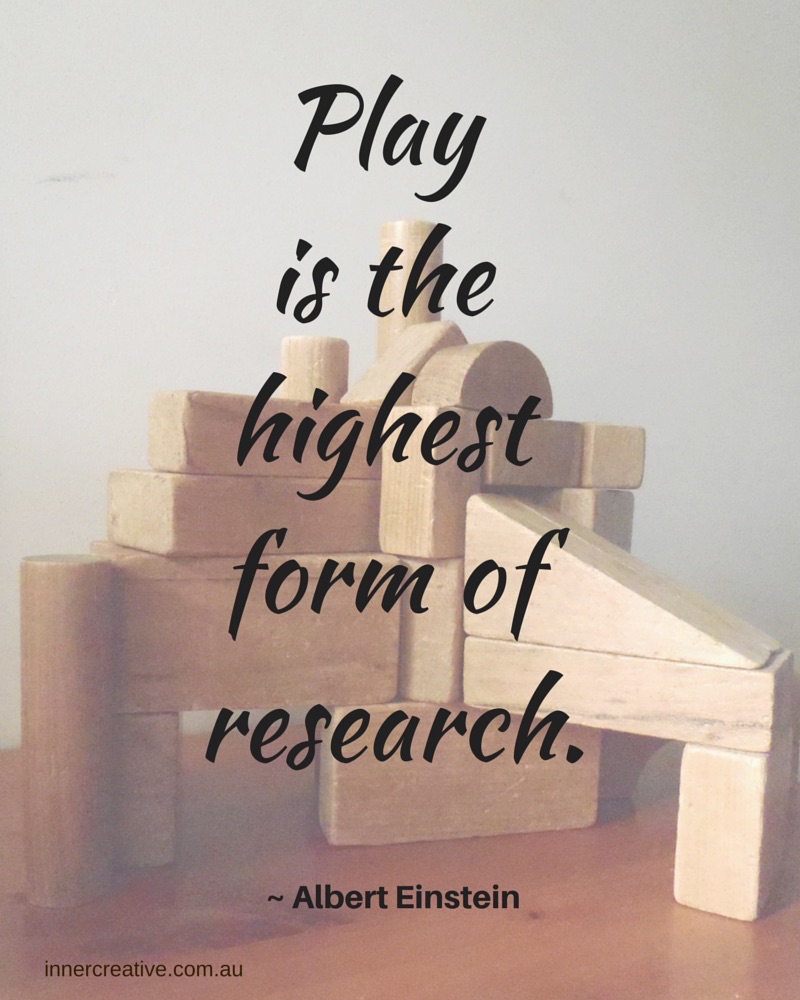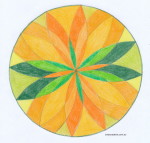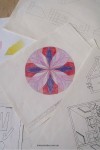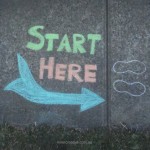Have you ever wondered, or asked yourself ‘What if?’ Both are great ways to foster your creativity and ignite your imagination to explore the possibilities, and expand beyond your current reality. You can get a lot out of using these questions in a conceptual way for brainstorming, problem solving or scenario planning. But their true value in fostering our broader creativity appears when you use them alongside taking action – an activity otherwise known as ‘play’ or ‘experimentation’.
In simple terms, playing involves posing a question, like “What if I put this here?” or “I wonder what would happen if I added this into the mix?”; trying it out to see what happens; and then evaluating the result before taking the next step (whether that involves building on our previous attempt or even undoing what we just did to try something else).
Kids do this so naturally during their free play time (and without overthinking or being overly conscious about it). For instance, if you watch a child building a tower there may be some stops and starts as they ponder which block to choose and where to put it. But they quickly try things out and rework them as they go. The more time they spend playing (in combination with their naturally curious natures), the better they get at posing questions, taking risks and developing their intuitive thinking to guide them on what to do next.
Unfortunately, the concept of ‘play’ for adults has been downgraded and undervalued because we commonly associate playing with being childish, and hence immature or silly. So for those uncomfortable with seeing themselves ‘playing’ then I suggest using the word ‘experimenting’ instead. As Albert Einstein said, “Play is the highest form of research.”

While playing and experimenting are quite similar in meaning, there are two aspects that I prefer about ‘play’.
Firstly, we associate playing with having fun and having some enjoyment in what you are doing. This doesn’t automatically mean that what we are doing is trivial or without meaning. By taking a light-hearted approach to our ‘what if?’, there is less chance of us getting heavily invested in the outcome. Consequently, we’re more open to where our curiosity takes us and to test out all sorts of different options; sometimes taking a surprising turn from where we might have initially planned when we started. We’re also less likely to get bogged down by all those paralysing worries and fears of ‘What if I fail or look stupid?’, and subsequently end up doing nothing.
If we enjoy something then we’re also more likely to be engaged and spend more time on it and push through any issues that may arise. Over time we start flexing our creativity muscles to try new, different, and perhaps even more adventurous options. This can help us to expand our comfort zones and develop our courage in taking more risks (albeit small and calculated ones). And if we’re being light-hearted about it, then if we make a mistake, or things don’t turn out as we originally planned, then it doesn’t automatically become a big deal. We’re more likely to move on to try something else (without falling into a heap first 🙂 ). Instead, if we lightly follow our curiosity then we’re more inclined to use our mistakes to spur us onto another discovery or pathway.
Secondly, I associate playing with being a little more open-ended than experimentation. We might have a general idea of what we’re moving towards when we’re playing (e.g. a meal or a blanket throw), but the end point and parameters aren’t as fixed as in a controlled experiment. We don’t have to be rigid or explicit in thinking about what we’re doing (obviously within the parameters of safety), and can give way to follow our intuition and whims as we go.
But in the end, it doesn’t really matter whether you call it ‘playing’, ‘experimenting’ or even, ‘researching’ (à la Einstein). What’s more important is to pose the ‘what if?’ question with a sense of light hearted curiosity and a little less judgment or fear, and take some action to test it out. It doesn’t need to be big or life changing. It doesn’t even have to be an artistic or crafting project, like painting or quilting. Play around and experiment with the ingredients or the herbs and spices that you add the next time you cook dinner; see if you can arrange the living room furniture in a different way; hold the camera on a different angle when taking a photo of your kids; or try wearing a colour you wouldn’t ordinarily wear. Perhaps even take some time to hang out with some kids, follow their lead and learn from the masters :-)? Build up your own comfort zone about where you practice playing as you expand your play repertoire. Maybe one day you could even transfer your playful approach to a work problem or task?
So where can you introduce a little play or experimentation into your day today? Read on to see where my playfulness takes me…
Please share your thoughts in the comment section below.





